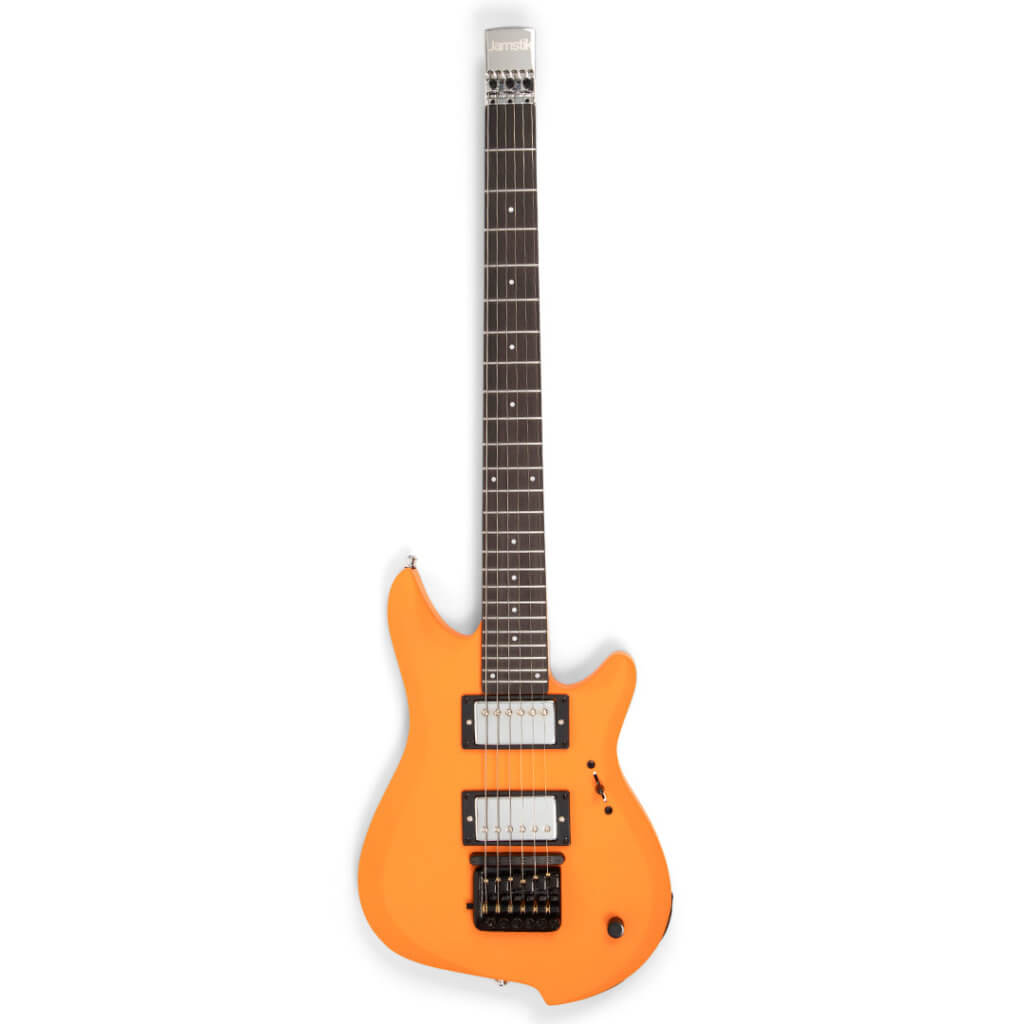MIDI and guitar sometimes don’t mix well; Jamstik figured out how to make an electric guitar with a modern aesthetic, along with full MIDI functionality that can open up new sonic doors to six stringers, without a lot of hassle. Enter the Jamstik Studio MIDI Guitar.

As it’s a guitar, the specs are quite nice; a mahogany body sporting a matte finish (our test instrument was a classy blue), two Lightning humbuckers, with a three-way blade switch and a single volume control that has push pull functionality to split the humbuckers into single coil mode. It’s a small body shape, but still comfortable to play. A rosewood fingerboard with 24 frets sits on the comfortable C-shaped maple neck, with a 25.5” scale and a 40mm wide nut. It’s a headless configuration, with the Allen head tuning machines on the heavy-duty bridge doing all the work, with a small “wrench” that sits into the bridge and is held in place magnetically. It’s a full-scale electric in a small format.
Just next to the bridge sits the MIDI pickup with six individual pole pieces. Connectivity is done by a USB-C cable, which also powers an internal Lithium-ion rechargeable battery with over 8 hours of play time at a full charge. A 1/8” jack is available, and with the included TRS to standard MIDI connector offers up traditional MIDI connectivity. It can send data through Bluetooth to devices as well.
As a traditional guitar, it’s excellent. Well made, stays in tune nicely, and is fun to play. The small shape is balanced well and the pickups sound very nice in both humbucking and split coil modes. Plugging the instrument into our DAW directly via the USB cable, we were up and running quickly using Studio One. Accessing our libraries of synths, keyboards, drums, and other virtual instruments was a breeze, and with no issues of latency. Yes, some hyper fast shredders might experience some issues, but most of the guitar playing community shouldn’t have any tracking issues – typically the bane of guitar/MIDI’s complicated relationship. It was great to be able to have a session with the instrument running into our DAW, the analog signal running into a track with Amplitube covering the traditional guitar sounds, with an analog modelled synth coming from the MIDI pickup, making a unique and very fat sound overall.
Jamstik has their own creator software that can be used as a standalone setup, as well as a utility to adjust the MIDI pickup. There is also a Jamstik portal app as well, allowing the player to connect to a tablet. MIDI over Bluetooth has some minor latency issues, but that’s typical of all Bluetooth devices, and the Jamstik also has the same problem. It’s best to connect via a cable, and a USB-A to USB-C dongle is included. Connected to an iPad, and running Moog’s Model D app was a blast, being able to access those classic sounds via guitar was amazing.
Using the Jamstik as a controller was as easy as hooking up a new stomp box, accessing sounds that are pretty much impossible in standard guitar signal processing. The ability to transcribe and score parts as they are played is great for any composer or teacher as well. In a studio setting, the ability to stick with one instrument and cover traditional and virtual instruments in a session is a game changer for workflow.
The only downside is the option paralysis that sometimes comes when so many sonic doors are opened; it can be a bit overwhelming as to what to do with all of these new sounds! It’s a good problem to have though, and the journey the player takes will certainly sound fantastic.
PROS:
Well done modern electric guitar design, excellent analog sounds, fast-tracking MIDI pickup.
CONS:
None.
STREET PRICE:
$799
